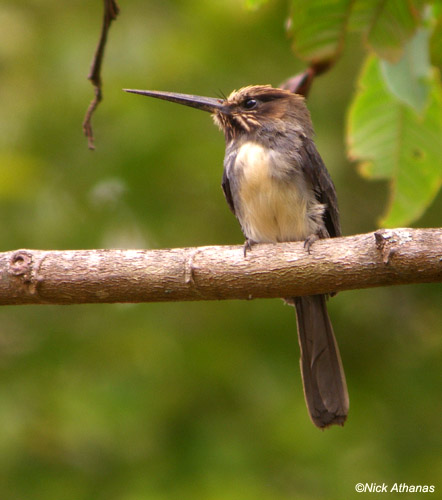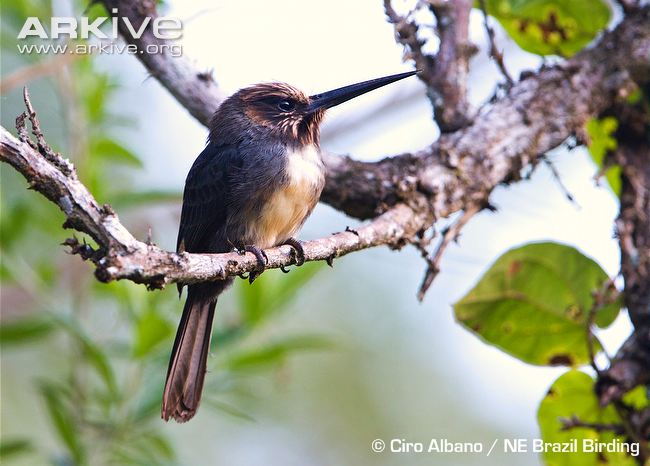
Jacamaralcyon tridactyla
TAXONOMY
Jacamaralcyon tridactyla Vieillot, 1817.
OTHER COMMON NAMES
French: Jacamar tridactyle; German: Dreizehen-Glanzvogel;
Spanish: Jacamar Tridбctilo.
PHYSICAL CHARACTERISTICS
7 in (18 cm); 0.7 oz (20 g). Has three toes, two facing forward
and one back; dark grayish green plumage and a chestnutbrown
head.
DISTRIBUTION
Southeastern Brazil.
HABITAT
Open woodland, lowlands.
BEHAVIOR
Similar to kingfishers in hunting
BEHAVIOR
, color, and beak shape.
FEEDING ECOLOGY AND DIET
Prefers flying insects. Perches on tall grasses at the edge of forest
to watch for prey, then darts out and catches it in mid-air.
REPRODUCTIVE BIOLOGY
Lays one to four white eggs in ground-hole nest cavity. Sometimes
nests colonially. Incubation is 20–23 days. Chicks emerge
from nest after 21–26 days, covered with white down. Both
sexes incubate, and care for chicks.
CONSERVATION STATUS
The only Endangered jacamar species, due to habitat loss from
agriculture and development. The current population is not
known, but has declined dramatically and is believed to exist in
very small numbers. Three-toed jacamars are protected in the
Caratinga Reserve in Brazil.
SIGNIFICANCE TO HUMANS
None known.
Other popular Animals
Photo Gallery of - Three-toed jacamar




 Animalia Life
Animalia Life